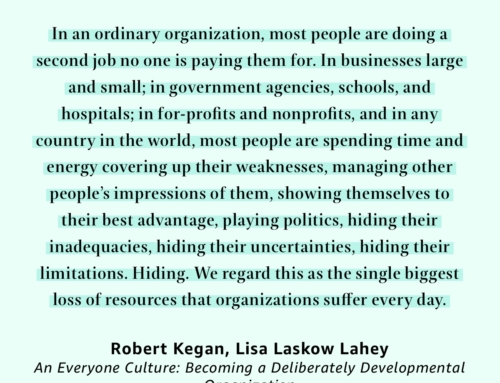LYSSA ADKINSMARCH 2, 2009
Humor me. Try this. Find a private place – a small conference room will do nicely. Stand in the center of the room and imagine that you are a boat in the middle of the ocean. The BIG ocean. First imagine that you are a dinghy. You know, one of those small life raft type boats with a little motor on it. Here comes the experential part: move around like you would if you were a dinghy riding the big ocean waves, getting tossed around to and fro. If you’re really doing this your arms should be flailing and you should be jumping around in a small area, maybe even going in circles. Are your arms flailing? Are you jumping? OK…next one. Same ocean, same big waves. This time, imagine you are an oceanliner. You are a nice big boat, perhaps one of those luxury cruise ships the size of a small town. Now, move like the oceanliner cutting through the waves. Move forward with speed. Perhaps you need to adjust course a few times, but move purposefully between adjustments. Are you moving ahead speedily? Really, try this. Risk silliness to feel the oceanliner.
Go between the movements of the dingy and the oceanliner a few times to lock in the feeling of the difference between them. Really make the movements big and purposeful. Get past your self-consciousness to fully experience this. You’re alone. No one will see. So let it rip. Flail about as the dinghy and stride ahead as the oceanliner.
Now let’s think about the ocean. It’s big, it’s scary. The waves are huge and they undulate one after the other after the other. Endless turbulence. For the dinghy and the oceanliner, the ocean is the same. It is what it is.
For a moment, think of the ocean as your company, your organizational context, if you will. Reorganizations, pressure from falling stock prices, mergers, layoffs, changing priorities, performance evaluations: these are the waves of the corporate ocean. One coming after the other, each taller than a Chicago skyscraper. Rolling again and again. Ceaseless.
On this ocean, is your team a dinghy? Are the team members afraid of falling over, hanging on for dear life? Are they battered by the ocean, not able to see the horizon for the sheer vastness of it all and the waves towering above them? Are they so exhausted from the effort it takes just to stay afloat that they can’t catch a break? Are they in constant motion, trying so hard, but not moving forward?
Or, is your team an oceanliner? Are they moving ahead, cutting the waves in half as they steam through? Are they in command of the vessel and able to see past the roll and pitch of the ocean? Are they able to catch a breath, think and decide which way to adjust course to avoid the obstacle up ahead? Are they more than in motion, do they have momentum?
Ask your team what kind of boat they are. Maybe get them to feel the dinghy versus the oceanliner versus whatever type of boat they come up with. Oftentimes, reflecting on themselves through metaphor and not thinking (feeling instead) turns up the resonance for the team. From here, they can see things about themselves they didn’t see before. Better yet, with the metaphor in mind and the focus on the future the metaphor often brings, they can see new possibilities for being better than they are today. Possibilities that didn’t exist when they were just a project team.





